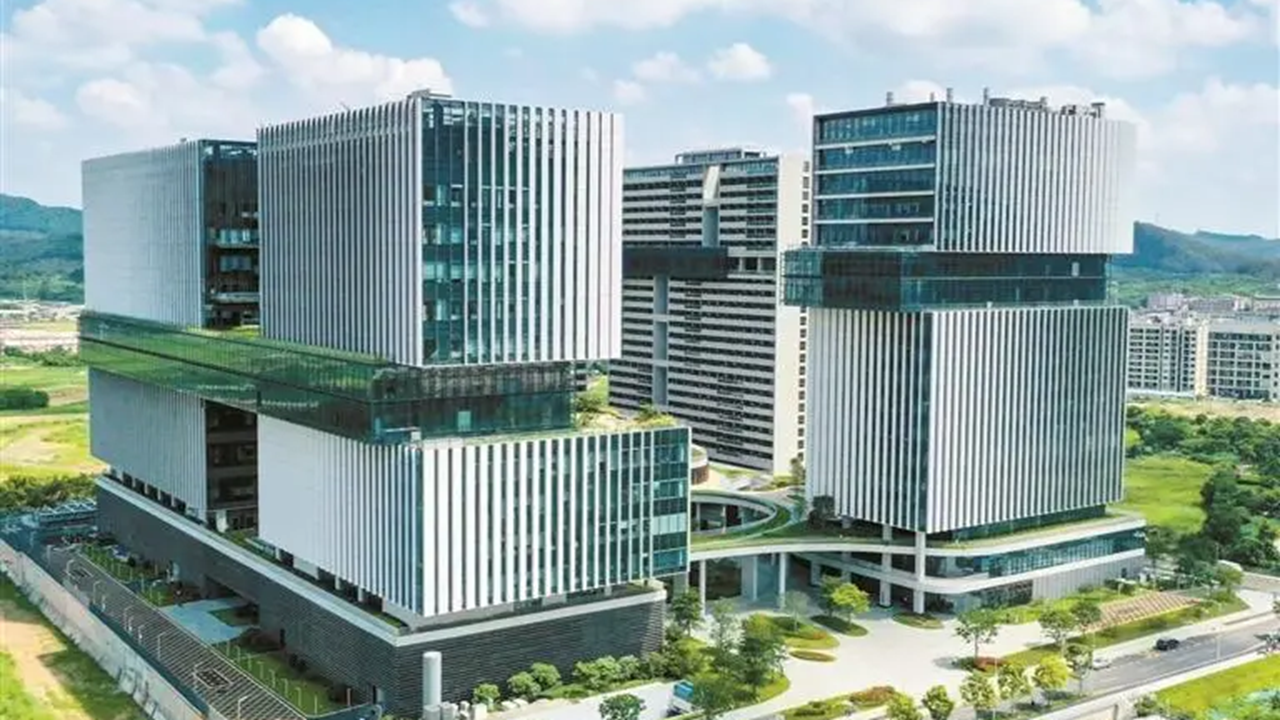A world-class scientific zone takes shape
Writer: Windy Shao | Editor: Lin Qiuying | From: Shenzhen Daily | Updated: 2025-06-24
On June 21, Shenzhen and Dongguan officially launched the Science Alliance for the Pilot Zone of the Comprehensive National Science Center in the Greater Bay Area, marking the formation of a nearly 200-square-kilometer world-class scientific zone.

A scene of Guangming Science City. File Photo
This collaboration unites Guangming Science City in Shenzhen and Songshan Lake Science City in Dongguan, two major innovation hubs that together represent over one-third of the GDP in the Guangdong-Hong Kong-Macao Greater Bay Area (GBA).
The alliance integrates universities, research institutions, scientific infrastructure, and high-tech enterprises across both cities. It fosters cross-regional, interdisciplinary collaboration to accelerate innovation and build a synergistic regional innovation community.
Recent appointments of distinguished scientists — such as neuroscientists Lu Wei and Dan Yang at Shenzhen Medical Academy of Research and Translation (SMART), and American scientist Charles M. Lieber at Tsinghua Shenzhen International Graduate School — underscore Guangming Science City’s growing attractiveness to top global talent.
Strategic infrastructure and connectivity
To enhance integration, the alliance plans a “15-minute twin-city transportation circle” supported by a new land corridor featuring expressways and main roads, cutting travel time between Guangming and Songshan Lake. A rail network, including two intercity railways and two metro lines linking Shenzhen Metro and Dongguan Metro systems, will greatly boost commuter efficiency. Key projects like the second phase of Shenzhen Metro Line 6 Branch and the northern extension of Line 13 are expected to open by the end of this year, significantly improving connectivity.
By year-end, Guangming District will enter its “three-metro-line era,” with total metro mileage doubling to 47.5 kilometers, accelerating regional development along transit corridors and fostering robust economic growth.
A new era for Guangming District
Guangming Science City, covering 99 square kilometers, focuses on information science, materials science, and life sciences. It hosts major scientific infrastructure projects, interdisciplinary platforms, two research-oriented universities, and provincial laboratories.
Similarly, Songshan Lake Science City, covering more than 90 square kilometers, boasts advanced research facilities including China’s only pulsed spallation neutron source and six universities.
Currently, Guangming District boasts 59 academicians, over 3,000 high-level talents, nearly 8,000 research institute personnel, and over 5,000 Ph.D. holders. A total of 158 scholars from the district have been listed in the global top 2% of scientists, and 17 have been named “highly cited scientists.” Guangming Science City has been ranked among China’s top 100 science and technology cities for three consecutive years, climbing from 24th to 7th place.
Over the past decade, Guangming's population has doubled — from 496,400 in 2013 to 1.159 million by the end of 2023 (latest data). From January 1 to June 21, 2025, Guangming District saw a combined transaction volume of 3,310 new and second-hand residential properties, a year-on-year increase of 101.83%.
At the alliance launch ceremony, academician Yang Xueming of the Chinese Academy of Sciences remarked, “As a scientist, working and living in Guangming is a happy experience.”
This happiness is tangible — it manifests in Guangming’s strong research atmosphere, with dense concentrations of universities, research institutions, major scientific infrastructure, and high-tech enterprises, where many researchers engage in original innovation.
It is reflected in comprehensive livelihood support, where residents enjoy a “full-chain” of high-quality education, from famous bilingual kindergartens to top-tier universities, right at their doorstep. Nearby, they have access to premium medical resources such as the Seventh Affiliated Hospital of Sun Yat-sen University (SAH-SYSU), Shenzhen Traditional Chinese Medicine Hospital Guangming Campus, and Guangming District People’s Hospital.
With 279 parks scattered across the district and Guangming Lake, as well as nine rivers including the Maozhou River meandering through the area, the district’s greenways, urban green belts, and specialty walking paths exceed 390 kilometers in total length.
The Shenzhen Territorial Spatial Master Plan (2021-2035) upgrades Guangming Central to a core city-level functional center, emphasizing its key role in scientific innovation and industrial growth. Supported by national policies prioritizing integrated reforms in education, science, and talent development, Guangming is positioned to become a leading innovation engine driving the GBA’s sustainable growth.
This new scientific zone, anchored by Shenzhen and Dongguan’s cooperation, infrastructure connectivity, and talent agglomeration, signals a major leap forward for China’s innovation landscape. It sets the stage for Guangming and Songshan Lake Science Cities to lead regional and global scientific advancement in the years ahead.